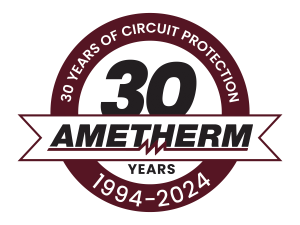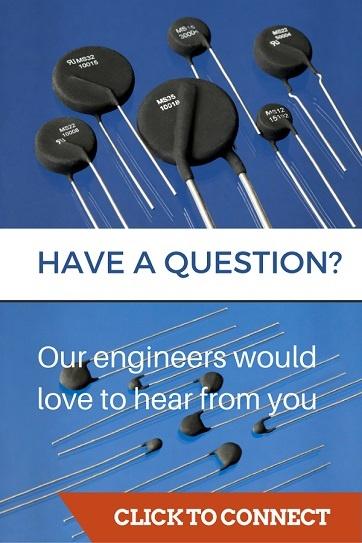In electronics and electrical engineering, most consumers overlook inrush current. When you power on electronic devices, they can experience a sudden surge in current, often several times higher than their usual levels. This surge can cause various issues, such as reducing equipment lifespan and damaging circuits. In this blog post, we’ll explore Ametherm’s Mini-Amp Inrush Current Limiters as an effective solution for circuit protection. Understanding Inrush Current Before we discuss … Continue Reading
Circuit Protection with Ametherm’s Mini-Amp
Temperature Sensing Issues: Troubleshooting, Tips and Solutions

Temperature sensing is a critical aspect of various industries and applications, from electronics and automotive to healthcare and food safety. Reliable temperature measurements are essential for maintaining product quality, safety, and performance. However, like any technology, temperature sensors, including thermistors, can encounter issues that affect their accuracy and reliability. In this blog post, we will explore common temperature sensing issues and provide valuable tips and solutions for troubleshooting them. Inaccurate … Continue Reading
NTC Thermistor vs. RTDs: Choosing the Right Sensor

Temperature measurement is a crucial aspect of many industries, from manufacturing and electronics to healthcare and automotive. When it comes to selecting the right temperature sensor, two popular options are NTC thermistors (Negative Temperature Coefficient thermistors) and RTDs (Resistance Temperature Detectors). In this blog post, we’ll explore what NTC thermistors and RTDs are, discuss their strengths and weaknesses, and help you make an informed decision based on your specific application … Continue Reading
Thermistors and Flyback Diodes: Motor Protection in Action

In the world of motors, sparks can fly, sometimes quite literally! When you turn off a motor, the sudden drop in current can create a voltage spike. This surge can harm sensitive electronic components like transistors and controllers. That’s where thermistors and flyback diodes come into play, working together to protect your motor. Thermistors: Temperature-Sensitive Protectors Picture the motor as a coil packed with energy. When you suddenly stop it … Continue Reading
Dielectric Strength in Electrical Systems

Electricity powers our daily lives, and behind the scenes, there’s a crucial factor ensuring the safety and reliability of electrical systems—dielectric strength. In this blog post, we’ll explore the practical importance of dielectric strength, its applications in various domains, and its role in thermistors. Understanding Dielectric Strength: Essential in Electrical Resilience Dielectric strength measures a material’s ability to endure electric stress without breaking down. When an electric field is applied, … Continue Reading
Energy Efficiency Brings Savings with Inrush Current Limiters

In today’s world of technology, there’s a big focus on making electronic devices and systems that have energy efficiency. This goes beyond just talking about it – it’s a crucial part of how we design and make things now. Whether it’s the phone in your pocket, the computer you use, big machines in factories, or systems that create renewable energy, being energy-efficient is a big deal. And a key player … Continue Reading
ThermiVolt NTC Probe: Temperature Sensor and Voltage Monitor
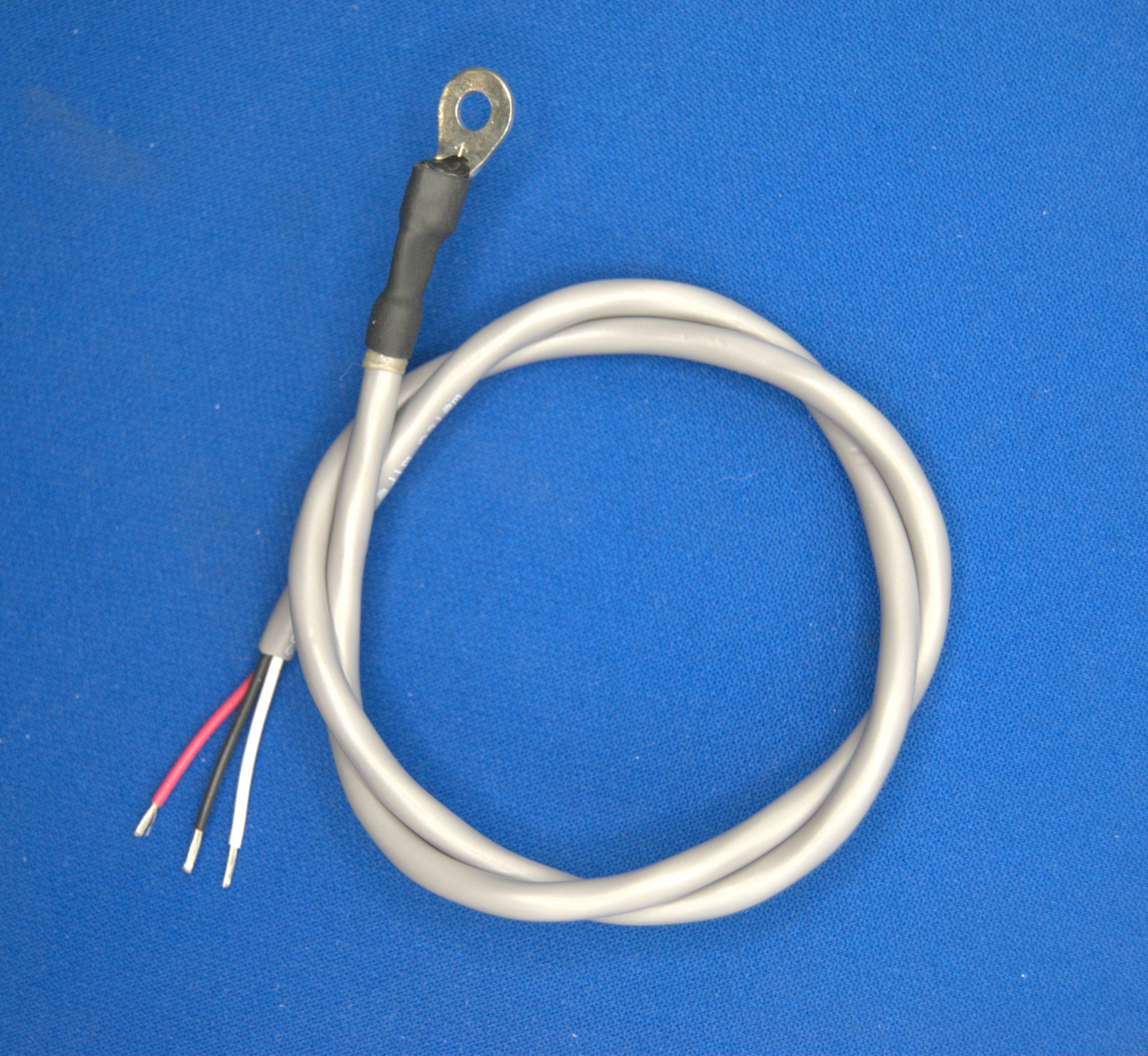
Revolutionizing Temperature Sensing and Voltage Monitoring In the fast-paced world of technology, where precision and reliability are paramount, our new ThermiVolt NTC Probe with temperature sensing and voltage monitoring stands out as a pioneer in dual-function sensing. These innovative probes seamlessly integrate temperature sensing and voltage monitoring, providing unparalleled accuracy and safety for a myriad of applications. How ThermiVolt NTC Probes Work: A Fusion of Expertise Temperature Sensing with Precision … Continue Reading
Electric Vehicles: Thermistors and Battery Management Systems

As the automotive industry rapidly shifts towards sustainability and environmental consciousness, electric vehicles (EVs) emerge as the forefront of this transformation. They promise reduced emissions and enhanced energy efficiency, redefining transportation. While battery technology and electric motors often steal the spotlight, the thermistor plays a vital role in the EV ecosystem. Let’s delve into the importance of thermistors in electric vehicles and understand why they are poised to remain indispensable … Continue Reading
Sensor Selection: The Advantages of NTC Temperature Sensors
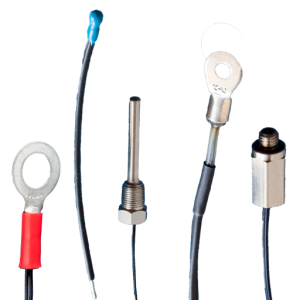
In our interconnected world, sensors have become vital tools that drive technology and innovation. They act as the eyes and ears of countless devices, enhancing our convenience and efficiency. NTC (Negative Temperature Coefficient) temperature sensors, in particular, excel at accurately measuring temperature. In this blog post, we will explore sensors, how they operate, and why NTC’s are an excellent choice for various applications. Understanding Sensors Sensors are instruments that detect … Continue Reading
Ametherm’s Guide To Kinked Leads
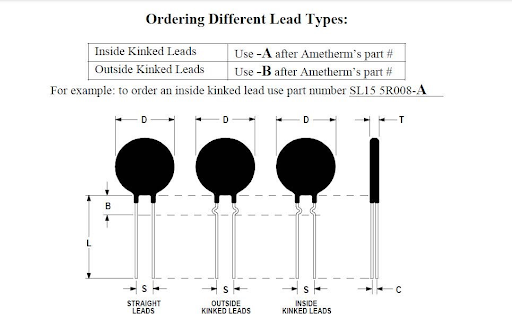
Ametherm is a trusted name in the field of inrush current limiting thermistors, providing solutions for a wide range of applications. To help you choose the right inrush thermistor for your specific needs, Ametherm offers three different lead types. These leads are crucial for proper installation and can significantly impact the effectiveness of the thermistor in your circuit. No Kink, Straight Leads: No Dash When you come across an Ametherm … Continue Reading
PTC Inrush Current Limiters: Advantages and Disadvantages
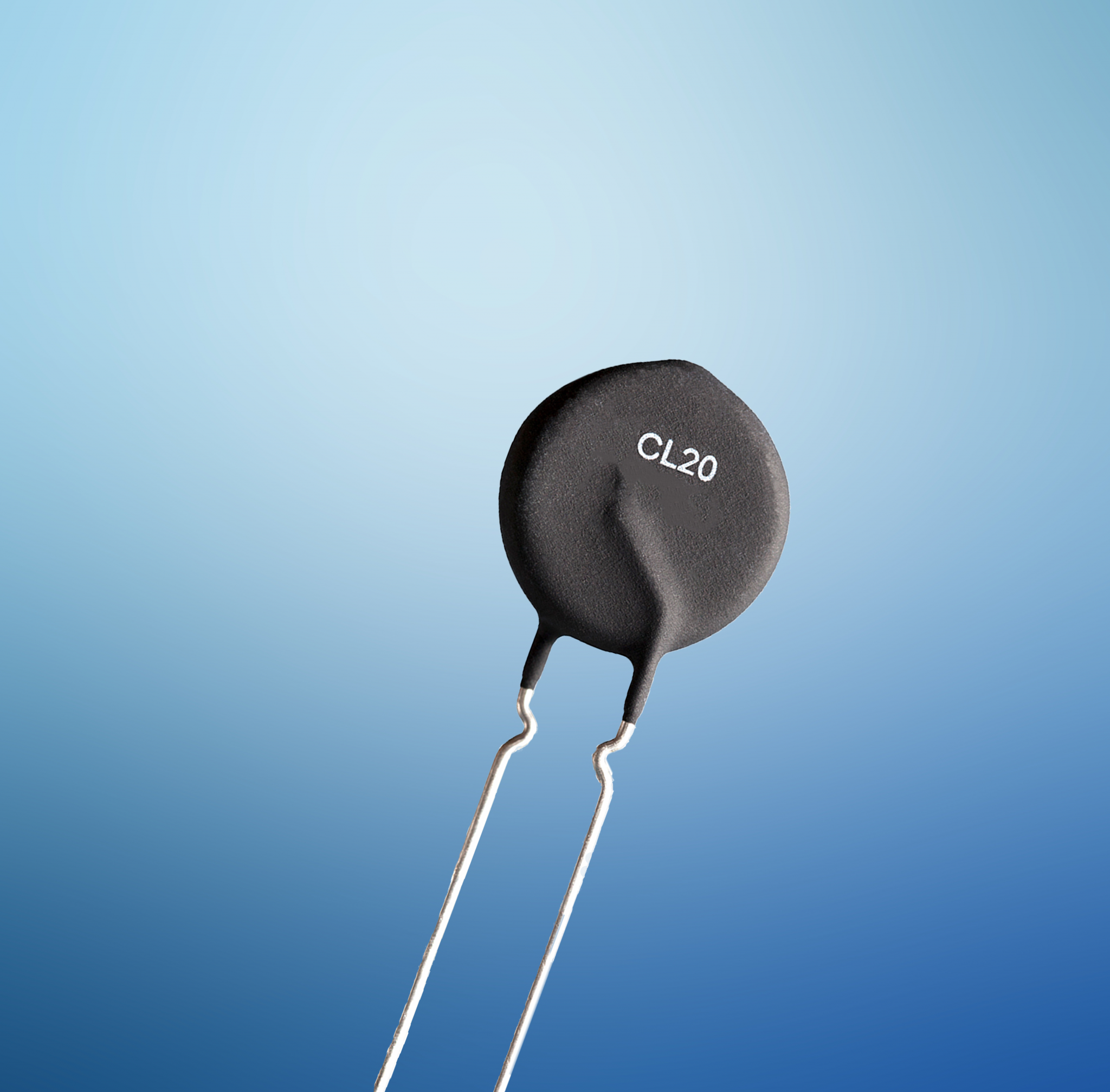
PTC’s Are Solutions to Inrush Current Inrush current, also known as startup or surge current, occurs when an electrical device is switched on, and it can exceed the device’s typical operating current significantly. This abrupt surge can strain the components of the circuit and can result in premature failure. Positive Temperature Coefficient devices have emerged as effective solutions for controlling inrush current in various applications. In this article, we will … Continue Reading
Temperature Probes: Protecting Premature Babies

Ametherm’s Sensing Thermistors have a seemingly unlimited number of applications. But when it comes to caring for premature babies in incubators, temperature probes take on an even more critical role in ensuring the health and well-being of these fragile infants. Read about the 4 Most Common Temperature Sensors Gentle Temperature Sensing With their ability to sense temperature changes with precision, these sensors also provide a gentle and non-invasive way to … Continue Reading
Inrush Current Limiting: PTC, NTC, or Active Circuits
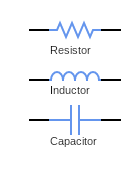
Inrush current limiting is vital to safeguard equipment and enhance its lifespan. NTC and PTC thermistors for inrush current reduction offer benefits like simplicity and cost-effectiveness, but sometimes, an active circuit is a more suitable choice. Comparing NTC, PTC Thermistors, and Active Circuits for Inrush Current Limiting Thermistors are temperature-sensitive resistors that precisely change resistance in proportion to temperature changes. NTC thermistors lower resistance as temperature rises, providing additional series … Continue Reading
Why NTC Thermistors In Series Beats Parallel
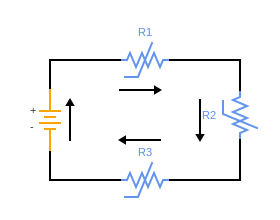
Connecting in Series – Recommended When you connect NTC thermistors in series for inrush current control, you gain several important benefits. Most importantly, the energy is distributed across all the units evenly, which extends the life of both your application and it’s components. Need a Refresher on What a Thermistor is? Click Here. Furthermore, another benefit of connecting NTC Thermistors In Series is that in doing so, it raises their … Continue Reading
PTC Thermistors vs. NTC Thermistors for Inrush Current
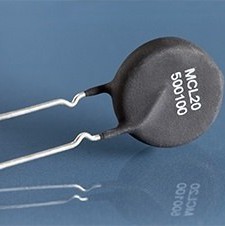
Prevent Inrush Current with PTC and NTC Thermistors PTC and NTC thermistors can provide inrush current protection in various equipment, machinery, and systems. Inrush current affects a wide range of products, from transformers to motors, and electronics from power supplies to inverters. Inrush current becomes further complicated by systems that switch on and off quickly, such as welding equipment and HVAC systems. This post will give you a brief overview of … Continue Reading
Temperature Sensors – Thermistors versus Thermocouples
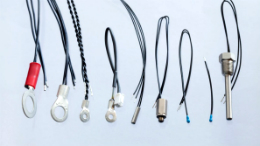
Thermistors vs. Thermocouples Temperature sensors are important for everyday life, from working in industrial plants to preventing fires. Thermistors and thermocouples are two such temperature sensors. A thermistor is a thermally sensitive resistor that exhibits a continuous, small, incremental change in resistance correlated to temperature variations. Thermocouples reflect proportional changes in temperature through the varying voltage created between two dissimilar metals electrically bonded together. Both are good options for temperature … Continue Reading
Thermistor Temperature Sensor Plays a Role in Bowling
Thermistor temperature sensors have broad applicability NTC Thermistors are non-linear resistors that alter their resistance with temperature. Resistance on an NTC probe will decrease predictably as the temperature increases allowing for extremely accurate temperature measurements. These temperature sensors have applications within environmental science, prevention, medical, building automation, aerospace, automotive, life safety, and others. One industry not immediately thought of for thermistor temperature sensors is the bowling industry. A … Continue Reading
When to Use NTC Thermistor Probes and Why It’s Necessary
NTC Thermistor Probes Have Endless Applications NTC thermistor probes measure liquid levels and temperature in industries that extend from automotive electronics to medical technology to green energy. Their applications are endless, and their purpose ensures the operability of the applications they serve. A thermistor probe, can also be as simple as an NTC thermistor chip, encapsulated with epoxy or glass. Or, it can be potted in a metal or plastic housing … Continue Reading
4 Most Common Types of Temperature Sensor
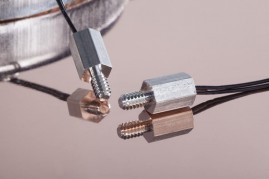
Temperature sensors range in accuracy and responsiveness Some applications, such as equipment used to create life-saving medications, require temperature sensors to be responsive and accurate for critical quality control; however, some applications, like the thermometer in your car, don’t require as accurate or responsive sensors. The four most common types of temperature sensors, ranging in responsiveness and accuracy from high to low are: Negative Temperature Coefficient (NTC) Thermistors Resistance Temperature … Continue Reading
Inverter Pre-Charge Circuit Inrush Current
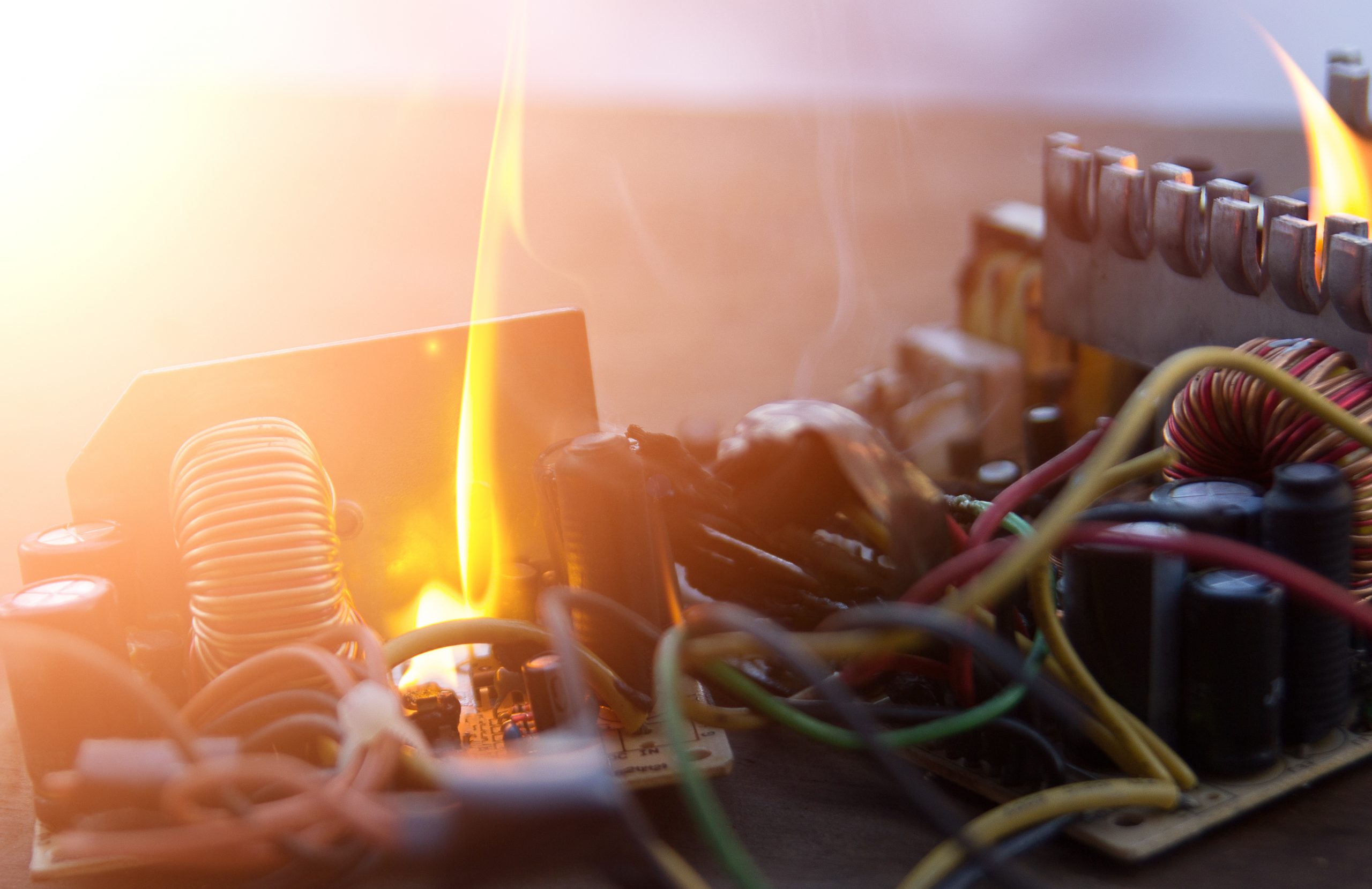
Pre-Charge Circuits Prevent Damage to Inverters Severe damage can occur to inverters when the inrush current is too great for the inverter. Pre-charge circuits protect the inverters by controlling the initial power surge. PTC thermistors can help a pre-charge circuit protect the inverter. Inrush current occurs when the maximum instantaneous input current flows through a system when the electrical power is switched on. In power tools, such as power drives, … Continue Reading
How To Limit DC Motor Inrush Current
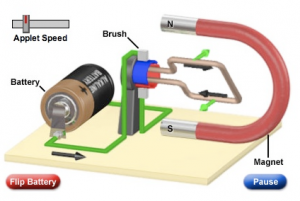
Choosing An Inrush Current Limiter To Preserve Your DC Motor So, what does an Inrush Current Limiter have to do with DC motor inrush? More than you may think. DC motor inrush is the maximum, instantaneous input current drawn by the DC motor when first turned on and it is important to know how to limit the inrush current to prevent possible damage to the motor. A DC motor converts … Continue Reading
Select the Right Inrush Current Limiter
Inrush Current Limiters protect electrical equipment from overheating at switch-on due to the surge of input voltage from the power source. Selecting the right Inrush Current Limiter is important. For example, switching power supplies, DC motors, and lighting ballasts can develop extremely high peak inrush current at turn-on unless you implement inrush current protection. Because inrush current equals the maximum instantaneous surge of incoming current from a power source, it … Continue Reading
The Effectiveness of Inrush Current Limiters for Vacuum Motors Experiencing High Inrush Current
Inrush current can cause considerable damage to electrical applications. It is important to control this starting current with the right inrush current limiter. In this article we look at what can happen when you choose the wrong circuit protection device. Then we demonstrate how to choose the right circuit protection device. Finally, we show the dramatic difference between using an inrush resistor and not using one in a vacuum motor. … Continue Reading
Designing a Furnace Fan and Limit Controller Using an NTC Thermistor and an Arduino Microcontroller
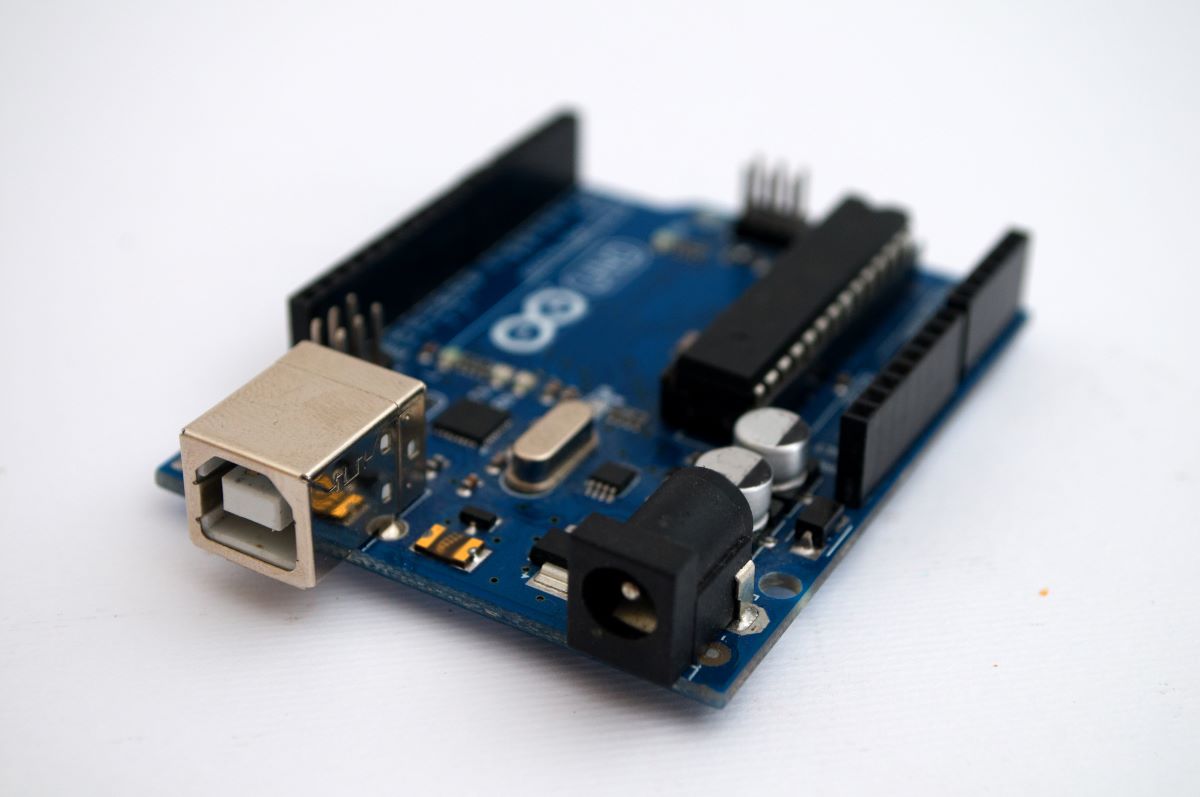
Written By Joe Conti NTC thermistors are a great way to control the power functions of a residential furnace system. These thermistors can sense the air temperature in the furnace heating chamber and turn the power on and off. Replacing the power control of the furnace with a temperature sensor is easy to do. This article will walk you through how to do this starting with an Arduino microcontroller and … Continue Reading
Customer Testimonial: Providing Inrush Current Limiter Support
Ryan Martin, Bora Stitch LLC Ryan Martin, owner of Bora Stitch LLC, a commercial embroidery business based in West Chester, Pa., sought out Ametherm for an inrush current limiter solution for a 2001 Tajima embroidery machine being used to sew hats for the Boy Scouts of America. Because of Ametherm’s policy to always have a live person available to answer calls and questions, Ryan was able to speak with an … Continue Reading
Using Epoxy to Protect NTC Thermistors
One common way to protect NTC thermistors from damage that might impair performance is to encase them or house them in epoxy. The chemical characteristics used to protect NTC thermistors are found in industrial grade epoxy with a high dielectric strength and thermal conductivity. An epoxy coated NTC thermistor temperature sensor appears as a tear-drop-shaped bead with two radial wire leads. Very often these types of NTC thermistor temperature sensors … Continue Reading
What is an Inrush Current Limiter? The Single Part Solution
There is a lot of information available about inrush current limiters and their different applications, capabilities, limitations, and other particular details. But very infrequently is the most basic question asked, what is an inrush current limiter and why is it used? To access, appreciate, and apply the benefits and solutions that these components provide, it is important to first be able to understand, acknowledge, and answer the question of what … Continue Reading
DC/DC Converter Inrush Current

Regulating Inrush Current at Powerup At powerup, DC/DC converters draw a large amount of electrical current. This inrush current can be fatal to both the converter and the load if not controlled at the beginning. To achieve a soft start, when the electrical current rises gradually to its specified level, the use of an NTC Thermistor Inrush Current Limiter can be vital. DC/DC Converters DC/DC converters transform a source of … Continue Reading
Cool-down Time for Inrush Current Limiters
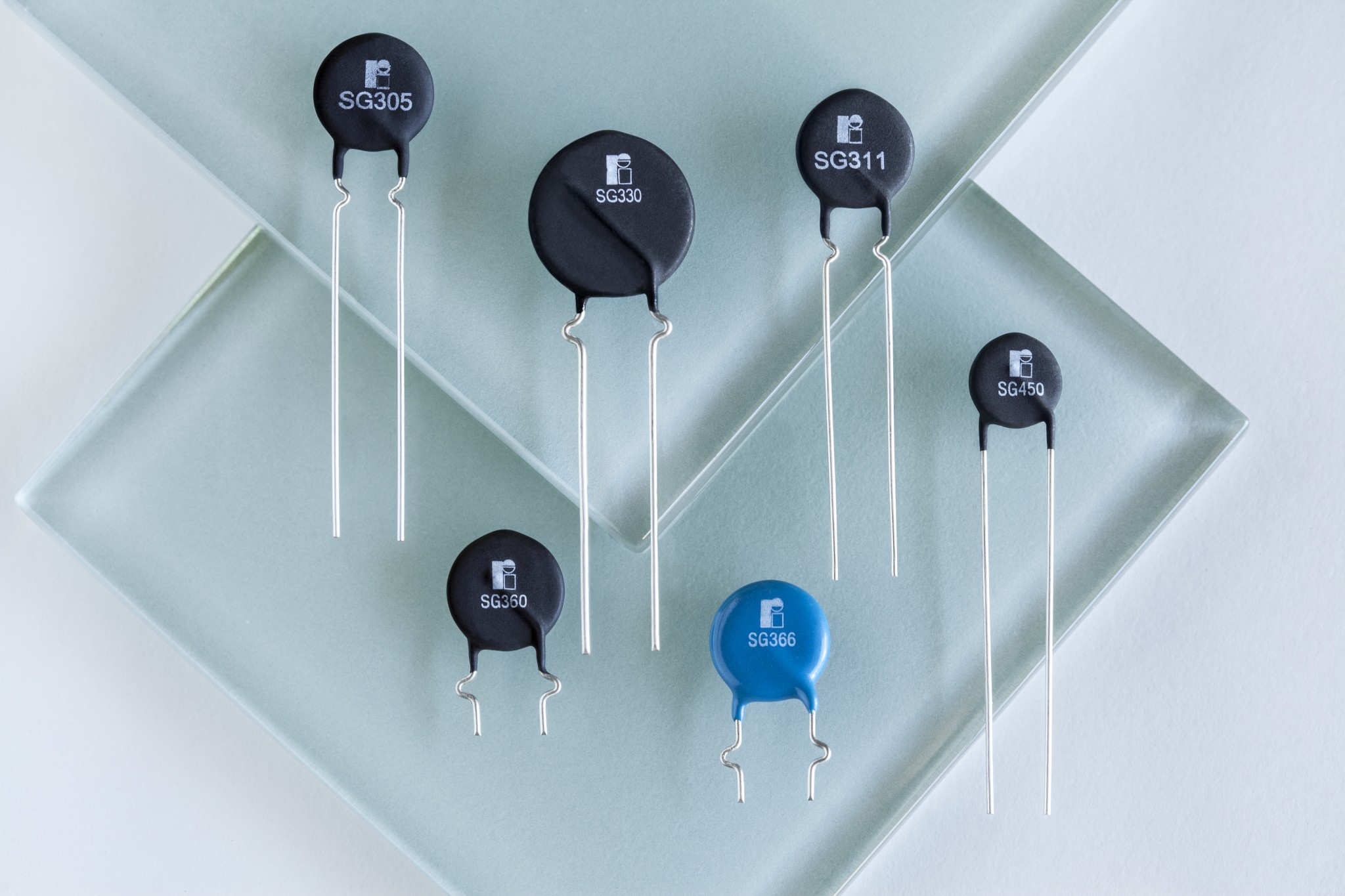
NTC Thermistor Inrush Current Limiters are used to reduce the inrush current that occurs when an electrical device is switched on. High inrush current is the result of the maximum instantaneous input current drawn by electrical equipment during the initial power up. As technology continues to advance, most systems today run efficiently and maintain a low impedance, which in turn contributes to a high inrush current. Cool-Down Time After Power … Continue Reading
ACCU-Curve Series Thermistor With Insulated Tinned-Copper Leads

Interchangeable Device Eliminates Conduction Between Leads for the Highest Temperature Sensing Accuracy Ametherm today (April 9 2018) announced that the company has extended the capabilities of its ACCU-Curve series of interchangeable NTC thermistors with the ACL-011. This new device features insulated tinned-copper leads, ensuring the most accurate temperature sensing with no unintended conduction between leads. Ametherm’s ACL-011 delivers long-term stability and reliability for high-accuracy temperature sensing, control, and compensation in … Continue Reading
Inrush Current Limiter Replacement for Pool Chlorinators

The sky is blue. The outdoor temperature is rising. The time to get that pool back up and running is now! Whether you run a pool business or are a pool owner, you know how important it is to have your pool chlorinator running smoothly, all season long. But what do you do when your pool chlorinator stops working? Buying a new one might be the first thing that comes … Continue Reading
Capacitor Inrush Current
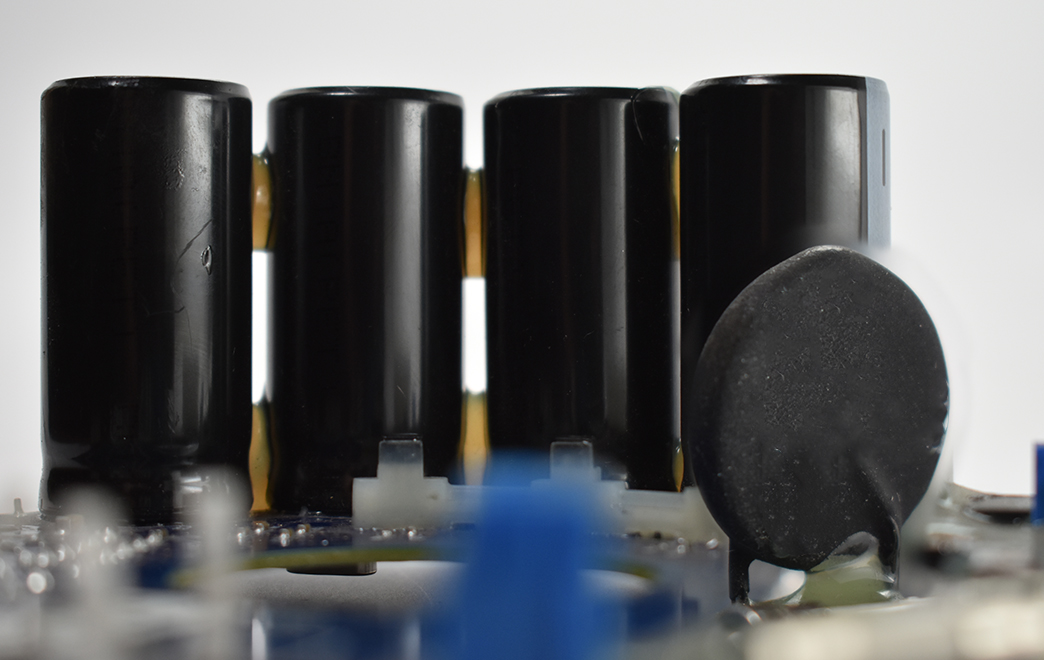
Reducing Inrush Current to Capacitors Calculating the amount of current flowing to a capacitor, then protecting your load from this initial flow of current is important for any electronic device. The ability to reduce this inrush, caused at powerup, can typically be accomplished by the use of an NTC (negative temperature coefficient) thermistor inrush current limiter. Cause of the Inrush Current Filter capacitors are devices designed to reduce the effect … Continue Reading
Ametherm’s Temperature Sensor and Inrush Current Limiter Part Numbers Decoded

From the creation of the first inrush current limiter series, back in 1994, Ametherm knew that having logic behind the series naming convention would be important. Not only for organizational means but also to easily identify the components of the inrush current limiters and NTC thermistor temperature sensors. Both product lines, the inrush current limiters and NTC thermistor temperature sensors, have stringent guidelines created to get the most accurate description … Continue Reading
Ametherm to Showcase Leading Inrush Current Limiters and NTC Sensing Thermistors at APEC 2018
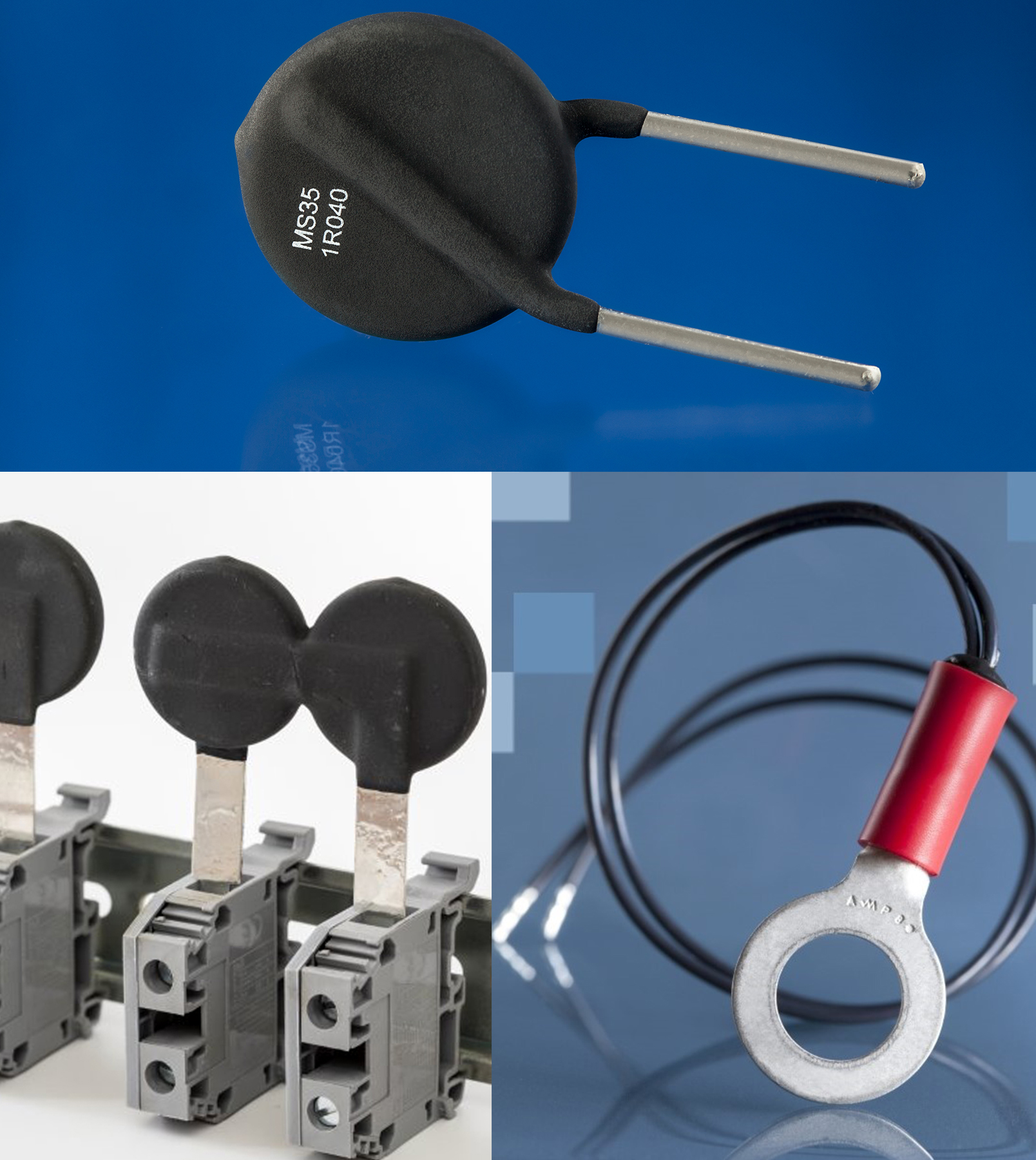
Ametherm announced its product lineup for the Applied Power Electronics Conference and Exposition (APEC) 2018. The company will be showcasing a wide range of its leading NTC and PTC inrush current limiters for reliable circuit protection and NTC thermistor sensors for high-accuracy temperature compensation and measurement. Featured inrush current limiters at APEC 2018 will include the company’s MS35 series of rugged NTC thermistors. Perfect for applications such as wind turbines, … Continue Reading
NTC Thermistor Temperature Sensors Provide Li-Ion Battery Safety
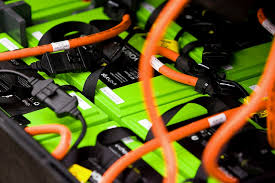
NTC thermistor temperature sensors are a key component in Li-Ion battery charging and safety. They provide critical temperature data required to keep the Li-Ion battery in the optimum condition during the charging cycle. Careful management of temperature during charging prolongs battery life and avoids hazards inherent to Li-Ion batteries. Li-Ion Batteries Power Green Energy Due to their light weight and high energy density, Li-Ion batteries are used exclusively in consumer electronics. Li-Ion batteries are … Continue Reading
Inrush Current Protection for LED Lighting Retrofits

Inrush current protection for LED lighting retrofits can be key to a successful lighting upgrade. Retrofit of LED lighting into an existing electrical system relies on the equipment already in place. This can be problematical due to the high inrush current created by the LED drivers. Falling LED prices and immediate energy savings are propelling the upgrade of older lighting modalities to new LED lighting for commercial and institutional users. For facilities management, benefits of a … Continue Reading
High Inrush Current Protection for Industrial Equipment

Large power users require mitigation of inrush currents as part of overall energy management strategy. Industrial automation with motor drives and logic controllers, high voltage power supplies feeding industrial robotics and solar panel arrays with large capacity power inverters all require inrush current limiting. Overview Inrush current is the momentary surge of current created when power is turned on to motors, transformers, power supplies and heating elements. These current … Continue Reading
Arduino and Thermistors – The Secret to Accurate Room Temperature
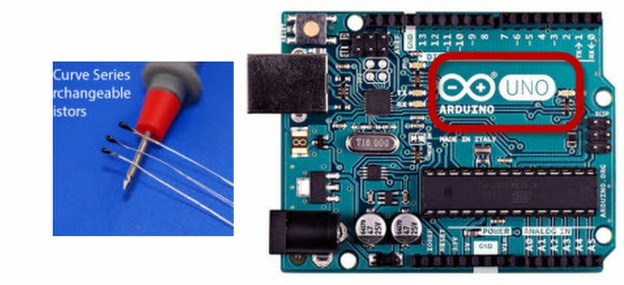
We’ve made a discovery and wanted to share it with you; introducing the Arduino Uno. If you’re an electronics geek who’s been wanting to learn more about the vast community of “Hardware Hackers” out there, read on! We discovered that you could hack together some awesome stuff with an Arduino Uno and other electrical components such as thermistor temperature sensors. And when you combine the Arduino and thermistors the possibilities are endless. We … Continue Reading
Thermistor Fan Control in Gaming Applications
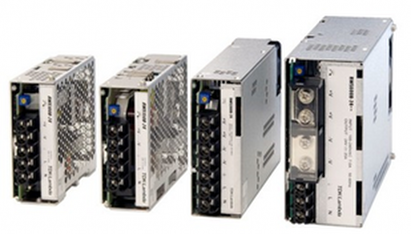
NTC Thermistors For Cooling Applications Thermistors are expanding in their applications every day. This year, EVGA, an American computer hardware company, redesigned its leading cooler to better monitor and cool power components in addition to the Graphics Processing Unit (GPU) component. In order to accomplish this, EVGA introduced Negative Temperature Coefficient (NTC) thermistors to its Printed Circuit Board (PCB). These NTC thermistors express large decreases in resistance in response to … Continue Reading
Overloaded Circuit Board? Clean House with our New UL Certified SL12 10006

We couldn’t keep it a secret any longer. Finally, a UL approved circuit protection thermistor (Inrush Current Limiter) that’s just 12.3mm in diameter but packs an energy rating of 40 (J), yes; we said 40 (J) plus a maximum continuous current rating of 6.0A. Meet our upgraded UL certified SL12 10006 for limiting inrush current. We think this device is a game changer! Up until now if an application required … Continue Reading
Limiting Heat Lamp Inrush Current Protects Relay Contacts
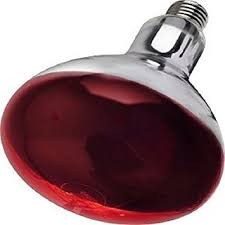
Limiting Heat Lamp Inrush Current Incandescent heat lamps create a large inrush current when first powered on. Limiting heat lamp inrush current prevents relay damage and extends lamp life. Heat lamps can be used to warm enclosed areas such as livestock pens and chicken coops. Banks of incandescent heat lamps are mounted overhead. As the number of heat lamps increases, limiting heat lamp inrush current becomes more important. Over current can damage relay contacts in … Continue Reading
5 Thermistor Sensor Considerations When Selecting An NTC Thermistor

These 5 thermistor sensor considerations will make selecting the right NTC thermistor easy Selecting a thermistor temperature sensor can be confusing, and you have a lot of options to choose from. You don’t want to risk equipment failure or circuit breaker short-outs. So, how do you make the right selection without sacrificing performance and giving up quality? See what the 5 thermistor sensor considerations are all about to find out! … Continue Reading
Limit AC Motor Inrush Current

Limit AC Motor Inrush Current In Air Conditioner Application AC motors used in air conditioning equipment draw large inrush current at power-on. A recent customer of ours had a 115VAC air conditioner installed in their travel trailer for park use. This 15,000-BTU unit required 16 amps for simultaneous compressor and blower motor operation. The trailer was also equipped with a load-shedding power distribution panel to protect its wiring harness from overload. If more … Continue Reading
Thermistor Temperature Sensor Blog Archive
Thermistor Sensor Blog Archive The thermistor sensor blog archive contains articles relating to temperature measurement, compensation, and control.
Inrush Current Blog Archive
Inrush Current Blog Archive The inrush current blog archive contains articles relating to inrush current, it’s causes, cures, and prevention. Inrush Current Limiting
Glass-Encapsulated Thermistors For Automotive and Industrial Applications
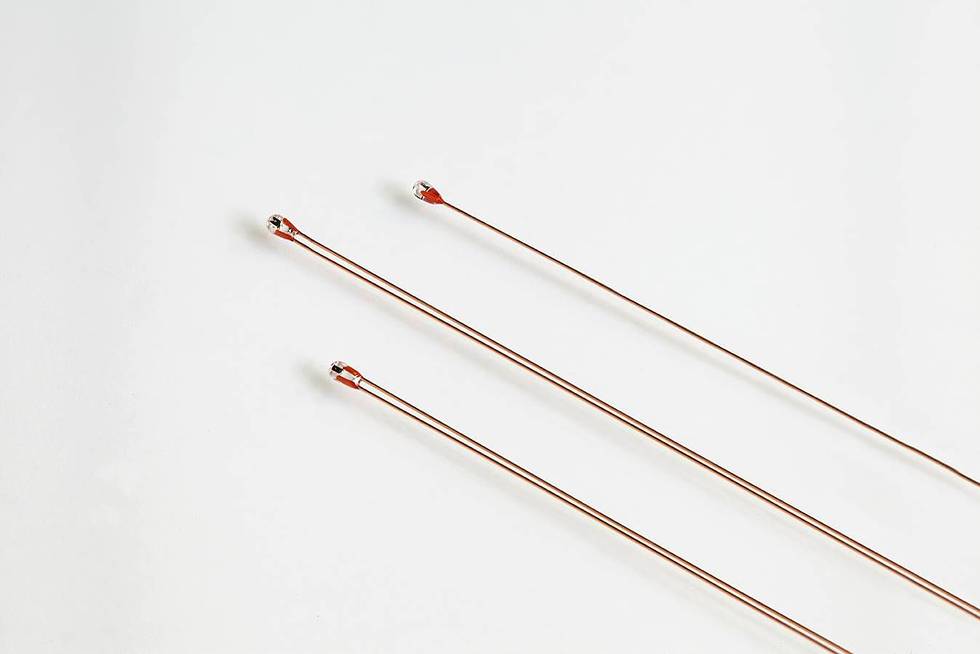
Application Overview Ametherm’s DG series glass-encapsulated thermistors provide long-term stability and reliability for high-accuracy temperature sensing in automotive and industrial applications. Hermetically sealed, the thermistors eliminate errors in resistance readings due to moisture penetration, while offering high operating temperatures and a compact size. Provides faster, more accurate, and less expensive alternatives to thermocouples and RTD probes Free from limitations due to solder temperature, which enables them to offer users a … Continue Reading
Thermal Time Constant and NTC Thermistors: A Practical Study
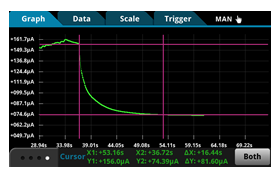
The Relationship between Thermal Time Constant and Temperature Sensors In this article, we’ll break down the relationship between the thermal time constant and NTC thermistors. We’ll also cover the importance of selecting the right thermistor with characteristics that will produce the correct thermal time constant for your application. Further down in this article, we demonstrate one way to measure thermal time constant; running two tests, then present the results. What is Thermal … Continue Reading
Calculate Inrush Current in Three Steps

An Inrush Current Limiter (ICL) can protect electrical equipment from overheating when switched on because of inrush current. And, because inrush current equals the maximum instantaneous surge of incoming current from a power source, it can be as much as 2 to 3 times the steady state current of the attached device. Inrush Current Calculators are the best way to measure the resistance versus temperature curve to get the right Inrush Current Limiter. … Continue Reading
Thermistor – Temperature Detection Fire Alarm Example

Thermistors serve a crucial role in temperature detection. For example, thermistor temperature detection can be used in fire alarms to detect fires based on a sudden change in temperature. Unlike photoelectric detectors or ionization alarms, thermistors only require heat to activate. Thermistors are temperature-sensing elements made of semiconductor material that displays large changes in resistance in proportion to small changes in temperature. Photoelectric and Ionization Fire Alarms The photoelectric detector requires heavy smoke … Continue Reading
Alternative Energy Applications for MS35 Inrush Current Limiters

Application Overview Ametherm’s MS35 series inrush current limiting thermistors play a key role in alternative energy applications by avoiding current spikes in the power generated by wind turbines, solar panels, and other sources as it’s fed into batteries, inverters, and other energy storage components. The MS35 devices are also used to regulate the release of battery energy in electric vehicles and in pre-charge circuits for many different types of battery … Continue Reading

